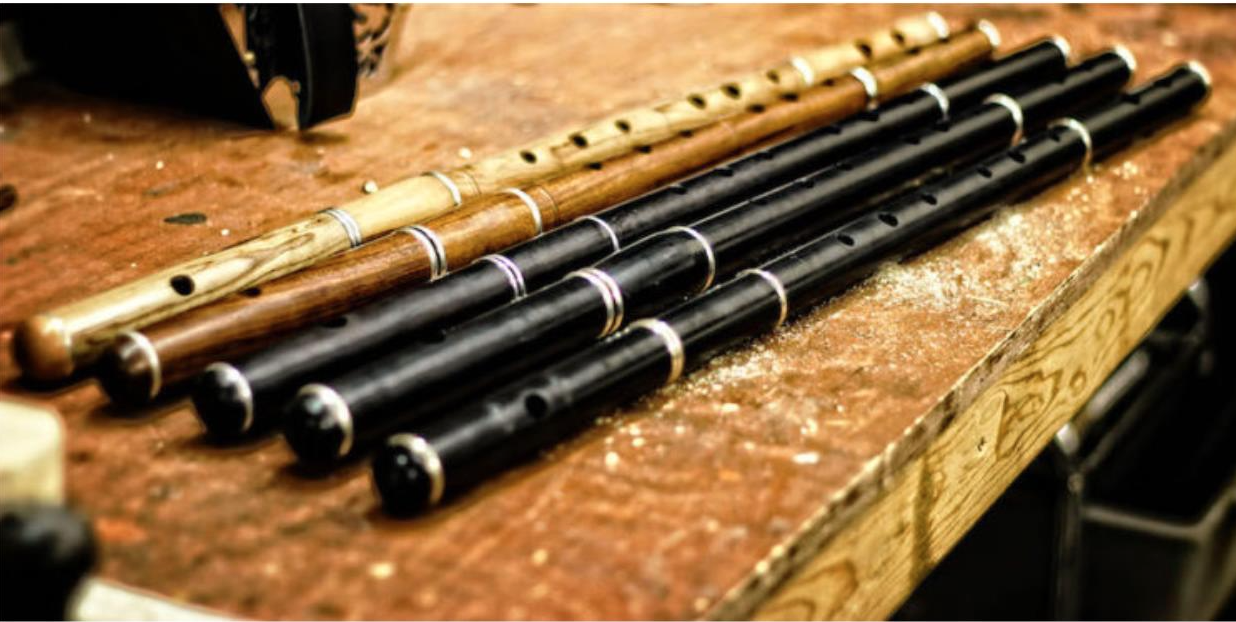It can be difficult to buy a wooden flute, especially if it is your first time buying one. It doesn’t matter if you are looking for a beginner or an advanced model, it can be difficult to choose the right one.
This is why I created this handy guide to buying an Irish flute . It will help you make the right decision and find the perfect Irish flute , regardless of your stage.
A New Lease of Life
These are the steps to expert flute care. I guarantee your Irish wooden flute is in the best shape you have ever seen.
An old wooden flute may have reached the end of its useful life. An old flute can lose its sound due to wear and tear. This can’t always be fixed.
Don’t be discouraged if this is the case. There are many other flutes that can be played. Your old flute would love you to be happy with another flute!
This guide is kindly brought to you in conjunction with the wooden flute experts at McNeela Instruments who stock a variety of house-made flutes, as well as flutes made by master Irish flute makers. They have something for everyone, whether you are looking for a celtic flute, an Irish flute or one of the best beginner flutes online.
How to Care For Your Wooden Flute?
While wooden flutes are beautiful, they can be temperamental. Your flute’s life expectancy is greatly affected by the care you give your Irish wooden flute.
A flute that is well maintained will produce beautiful sounds for many years. Poorly maintained flutes can lose their tone and make a distorted sound, even when played by the most skilled flute player. Flutes can become unplayable due to cracks or other damage.
How can you avoid these problems?
It is actually quite simple. It’s easy to prolong the life of your flute by giving it some love. It will take good care of you and create beautiful music, allowing your flute to shine. Here’s how it works.
This blog post is for owners of Irish wood flutes. It explains how to properly care for your instrument. You will learn the dos and the don’ts in wooden flute maintenance.
You’ll learn how to recognize the sound of a damaged flute and identify cracks or other problems. Learn how to oil and clean your flute the right way.
This expert advice will ensure that your wooden flute is in top shape. You and your flute playing will be grateful!
How to store your flute?
Let’s begin with the basics.
It is crucial to know where and how to store your wood flute. Wood reacts to temperature and humidity. It is best to keep it away from extreme temperatures.
Do:
• Keep your flute safe in its case and dry it in a cool place.
•m= Treat your flute with kindness
Don’t:
• As an old friend (name withheld) did, place it on top of the radiator. The heating was on and the flute got too hot and cracked. This was the most severe flute injury I have ever seen. A flute left in a car overnight at sub-zero temperatures was the second most severe damage I have ever seen. Is this a trend you are noticing?
• It is not necessary to carry it outside the case. I have repaired many flutes that were damaged by a tumble or contact with a hard surface. Storing your flute in a case can help to avoid these unexpected bumps and knocks.
Easy. It’s that simple.
How to clean your wooden flute?
Wooden flutes are susceptible to rotting if they are not taken care of. Wood can be a home for fungi that thrives in humid, damp conditions. How do you make it happen?
Condensation that forms on your flute’s inside when it is played (not spit!) The wood can be soaked. This can cause wood to warp and expand over time. This provides the ideal tropical environment for fungus development. It is important to clean the inside of your flute after playing.
Some flutes include a cleaning rod. You can easily get one if you don’t have one.
McNeela Instruments offers a separate Flute Care Kit that includes everything you need to take care of your flute.
A cleaning rod is typically a long, thin, wooden stick with one end. Simply take a piece of cloth and place it in the hole at one end of the rod to clean the bore. The clothed rod can be used to clean the inside of your flute. Easy.
The fabric should be able to absorb water. If you feel fancy, silk or cotton would be my personal recommendation. I have used many cotton shirts as cloth to clean my flutes.
The conical bore will be an important consideration. The conical bore is naturally shorter at one end than the other. Place the cleaning rod at one end. Be careful not to stick the cloth at the other end. It happens to all of us. Also, be gentle so the rod doesn’t scratch the insides of the flute.
Top Tip
You can cover the entire embouchure with your mouth, and forcefully blow into the flute if you are unable to bring your cleaning rod. This will remove any condensation.
However, a word of caution. When cleaning out your flute, be mindful of the pints of other musicians. Trad musicians are known for leaving their drinks on session floors. Many a pint has gone to waste due to being near a flute player.
How to Oil Your Wooden Flutes?
Oil is the oil of life for wooden flutes. Oil is essential for their maintenance. There are many oils that are unsafe to use, but grapeseed oil as well as almond oil can be used. Grapeseed oil is safe to use if you have a nut allergy.
You should not use any other oil in place. This could cause permanent damage to your flute. Vegetable oils are not recommended for the care of delicate wooden instruments.
You can find both almond oil and grapeseed oils in pharmacies or health food stores. Sometimes, they contain vitamin E. This is perfectly fine. It is good for your skin as well as the flute.
Oiling your flute will stop it drying out. Oiling your flute will reduce the risk of cracks due to wood warping and splitting from dry conditions. A damaged flute cannot be repaired with oil. Preventive measures are better than curative!
Instructions:
Use a cloth, or your hands (almond oil and grapeseed oil are great moisturisers for dry skin), to rub a few drops into the flute’s body. Allow the oil to absorb for a few minutes before wiping the flute cleanly with a dry cloth.
Here are some important points to remember when oiling your flute.
• You only need a little. You should use the grapeseed or almond oil sparingly. Use a small amount. Do not oversaturate your flute. A few drops are enough!
• Be careful with keys on keyed wood flutes. They can be very delicate. Be careful not to put oil on your keypads.
• Oiling the joints or cork can cause them warp. You can safely lubricate tight joints with cork grease.
• Do not oil your flute often. Oil your flute once a month. It will need less oil the more you use it.
However, you can oil the bore’s interior. Grapeseed oil and almond oil are good for the interior and exterior of your flute.
Attach another cloth to the cleaning rod, or have two separate rods for different tasks. Then run the cloth through the inside of your flute.
Even the most well-maintained instruments may still require minor repairs. What should you do in such a situation?
How to Fix a Damaged Flute?
Don’t. You should at least not do it yourself. Get professional advice before you attempt to repair any damage to your flute.
Old battered and damaged flutes might be found at sessions. These flutes are often played by veterans who have mastered traditional Irish music. They may also have pieces of string and tape attached to keep the flute from breaking apart. Do not feel inspired to copy their style.
There are many skilled flute makers and Irish wood flute repair professionals available around the world. It’s impossible to not have a damaged flute repaired professionally. It is easy to reach an expert online to get their advice.
Leave it up to the experts
It would be foolish to try to fix a broken arm, so give your flute the same care and kindness. Do not attempt to glue your flute. Superglue is not recommended. (I am having flashbacks while I write this.
McNeela instruments is always available to answer your questions and we promise not to judge! You can’t do a repair that is too difficult. (See Radiator Rory’s tale above.)
How do you know when it is time to seek professional help?
Signs Of Damage in Irish Wooden Flutes
Even the most well-maintained instruments can develop cracks. If cracks do occur, don’t panic. They are usually easy to fix.
These hairline cracks can sometimes be so subtle that you may not even notice them.
Your flute may suddenly produce a spongy, airy or fuzzy tone. This is usually caused by air leaking through a crack in the wood.
Sometimes, wooden flutes lose their tone due to being too dry. Oiling the flute first will improve its sound. It will take a few days for it to become shiny and new.
If you are unsure, take a look at your flute to determine if there is any damage. It can be hard because of the natural texture and grain of the wood.
The likely location is at the base of the headjoint, or at the top of your body, where they meet. You should look for cracks in the cork and joints. This is where a lot of natural wear and tear happens when disassembling or assembling the flute. This can be prevented by using cork oil to grease the joints.
A change in tone on keyed wooden flutes can indicate that one of the keys is sticking. To ensure that all pins are functioning correctly, you should inspect your keys on an ongoing basis.
No matter the extent of damage, an expert should still be able repair it. Many a flute has been saved from certain death by me.




